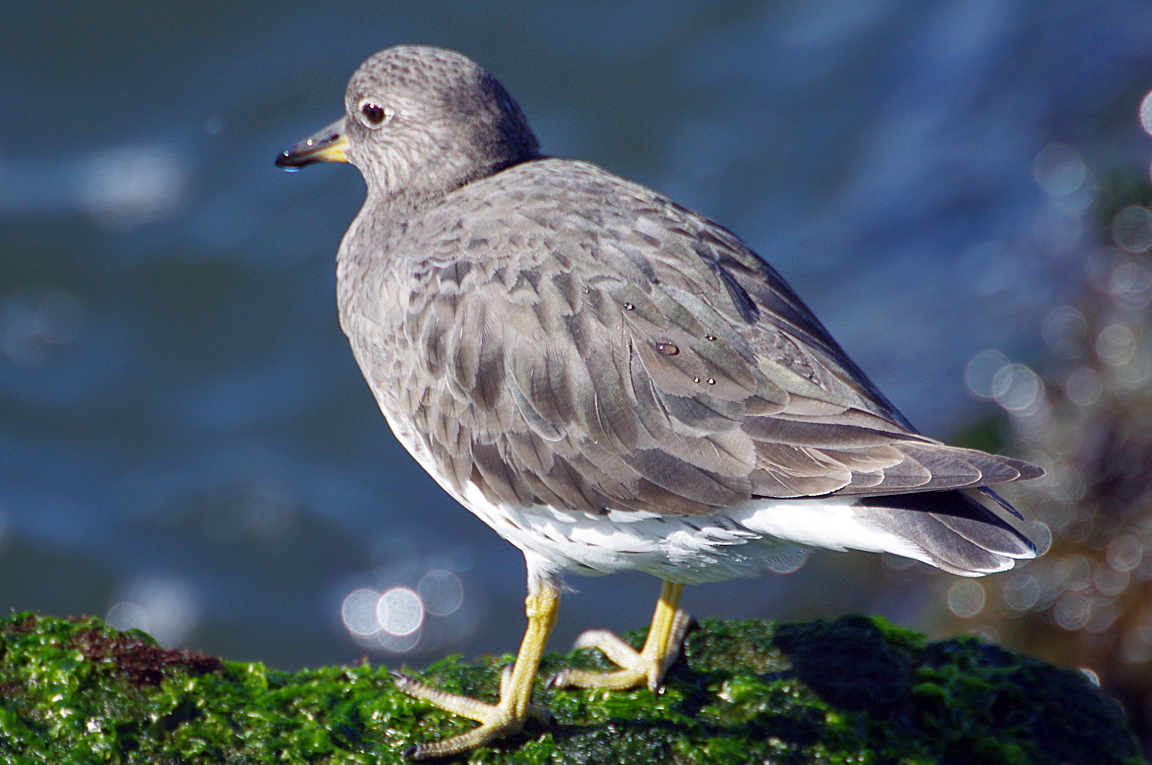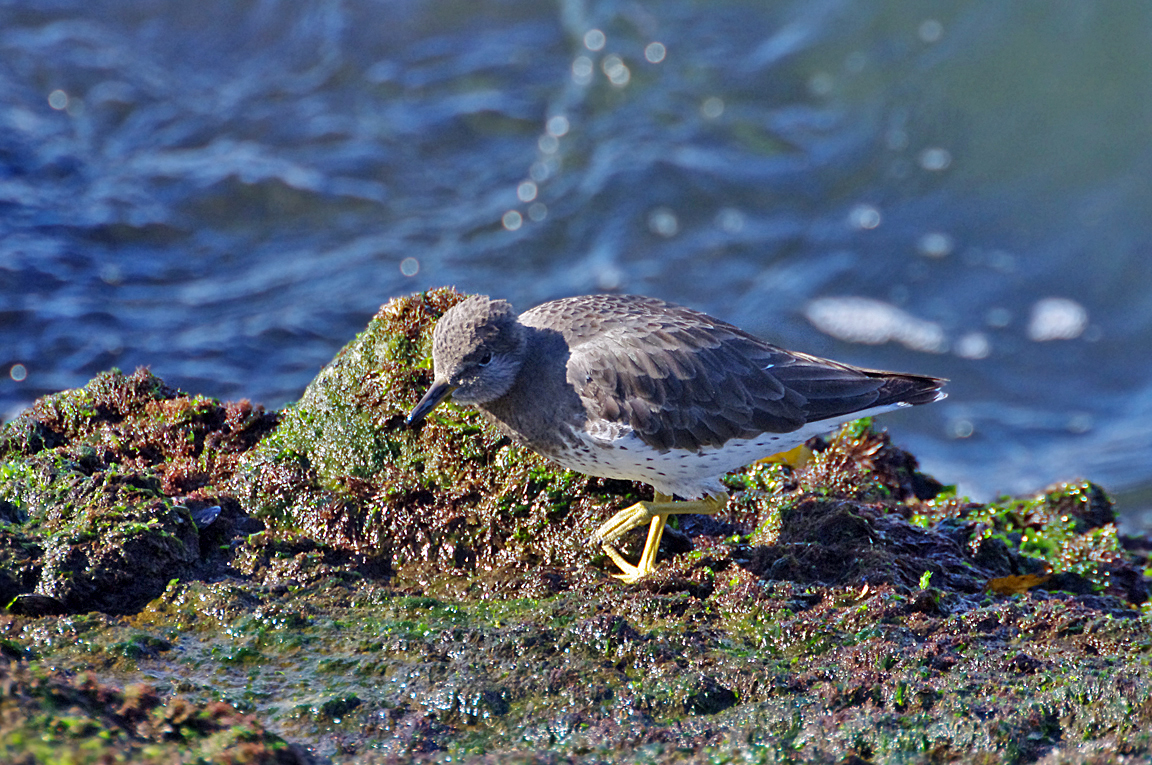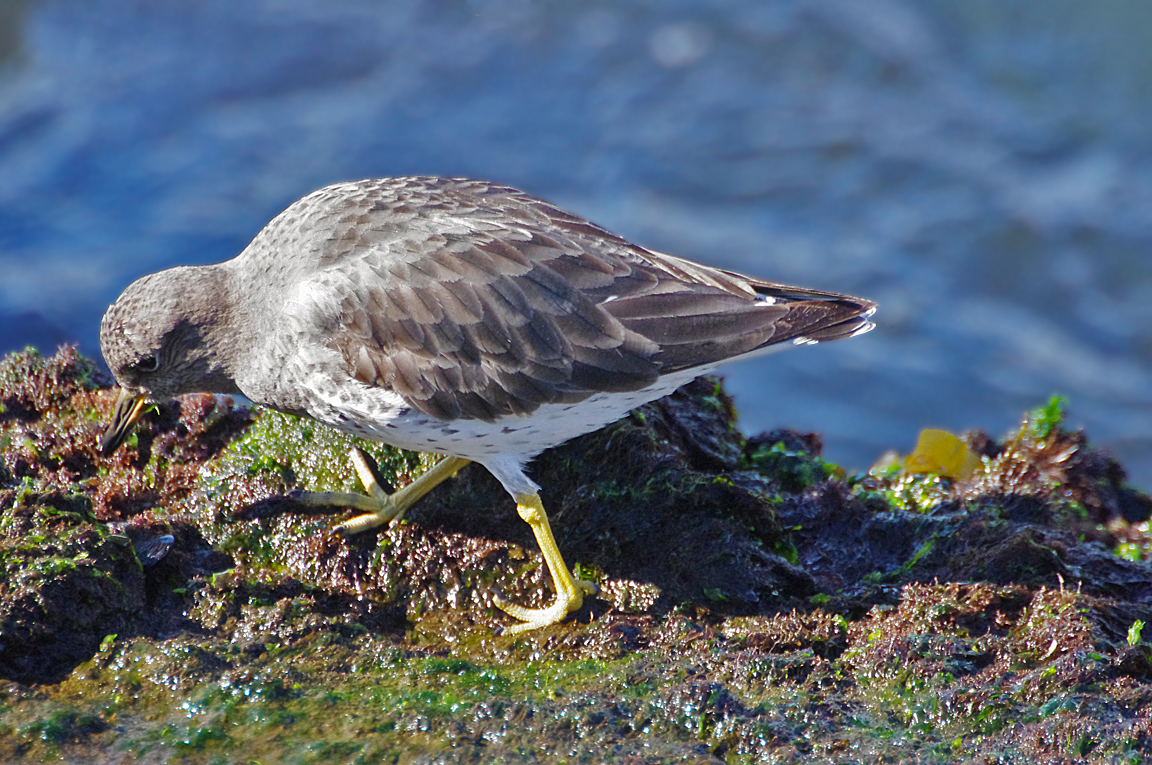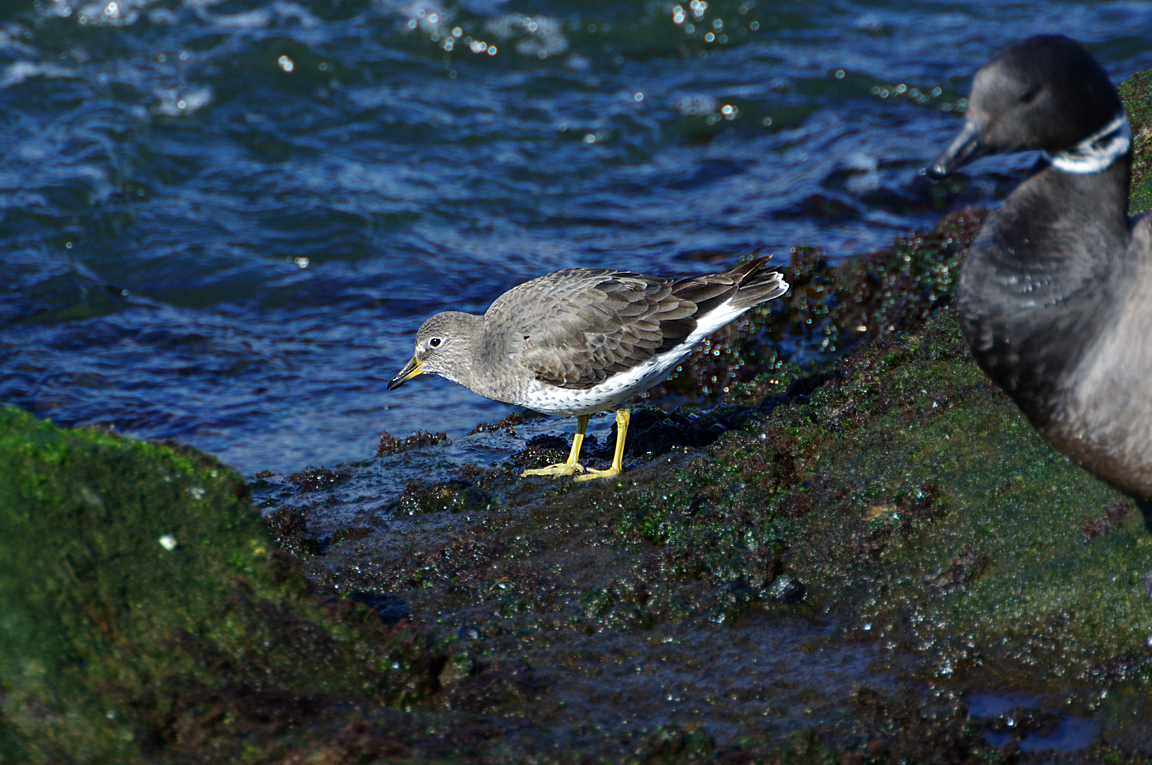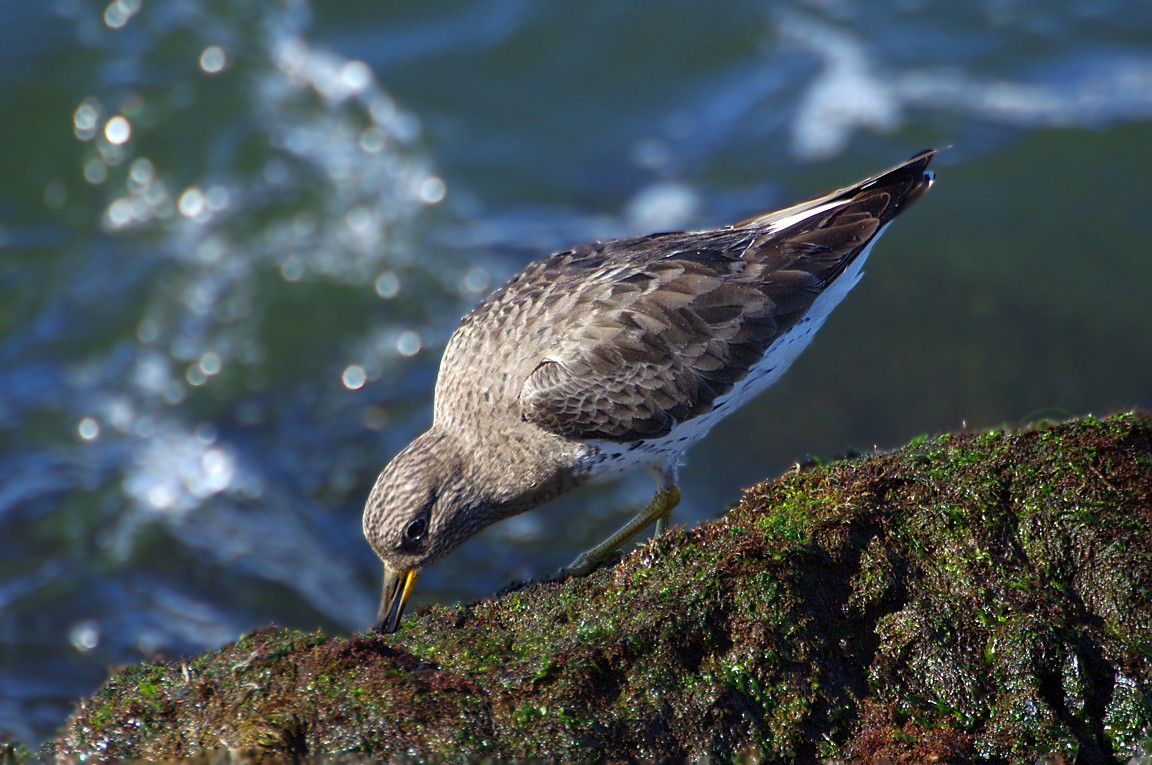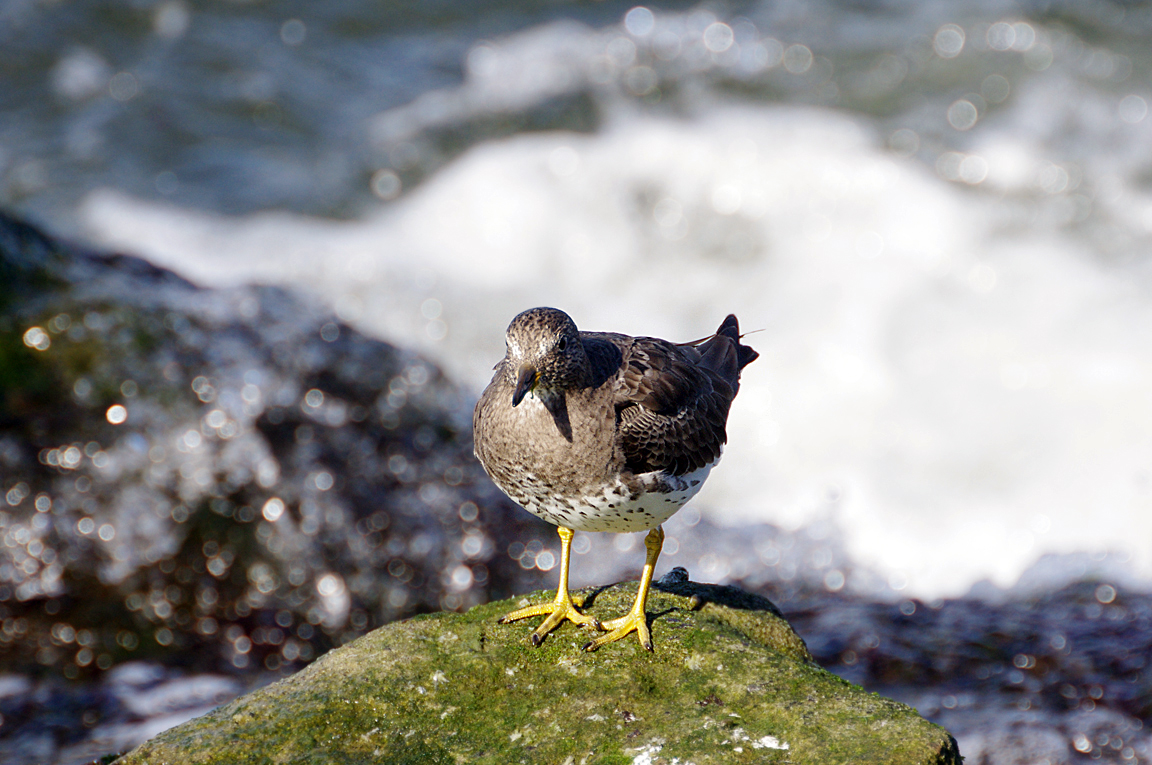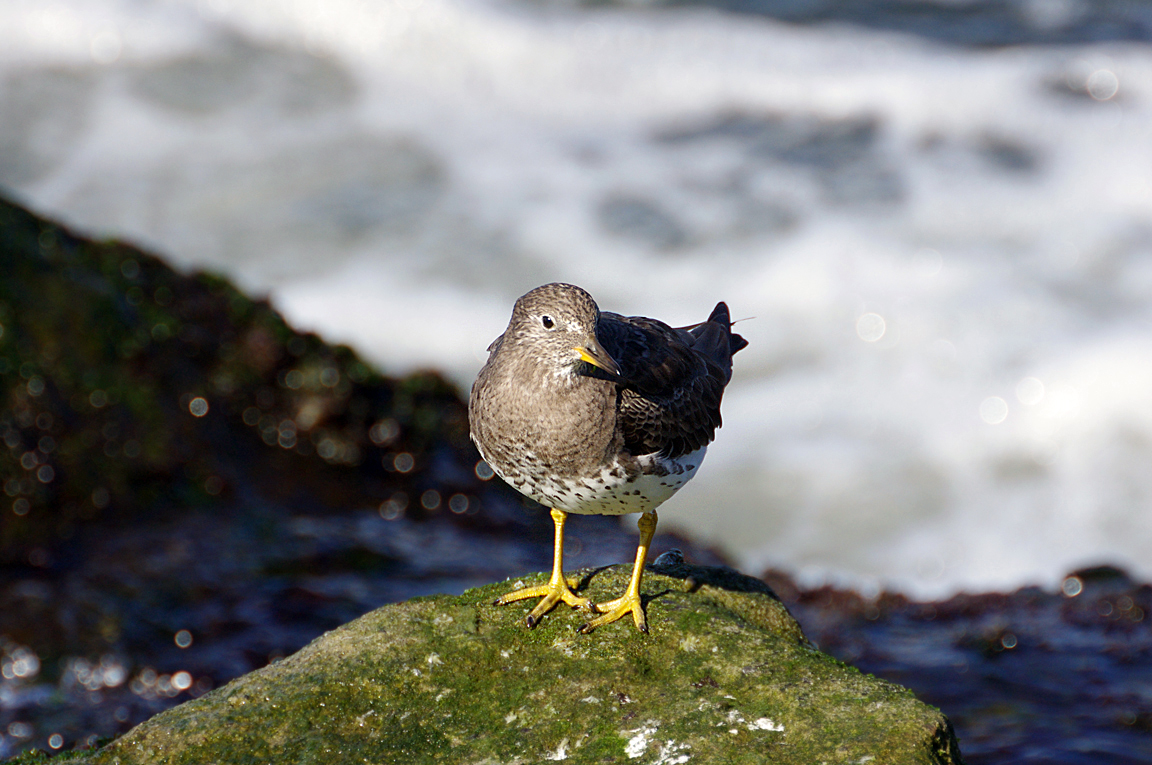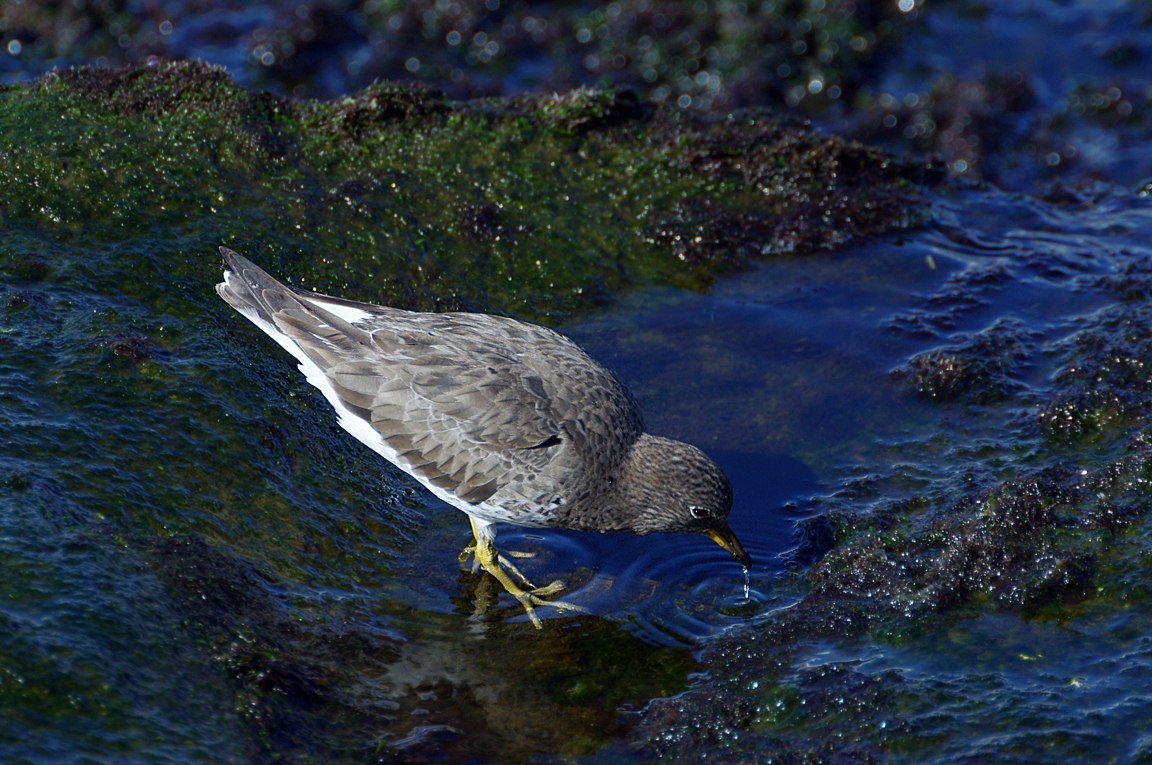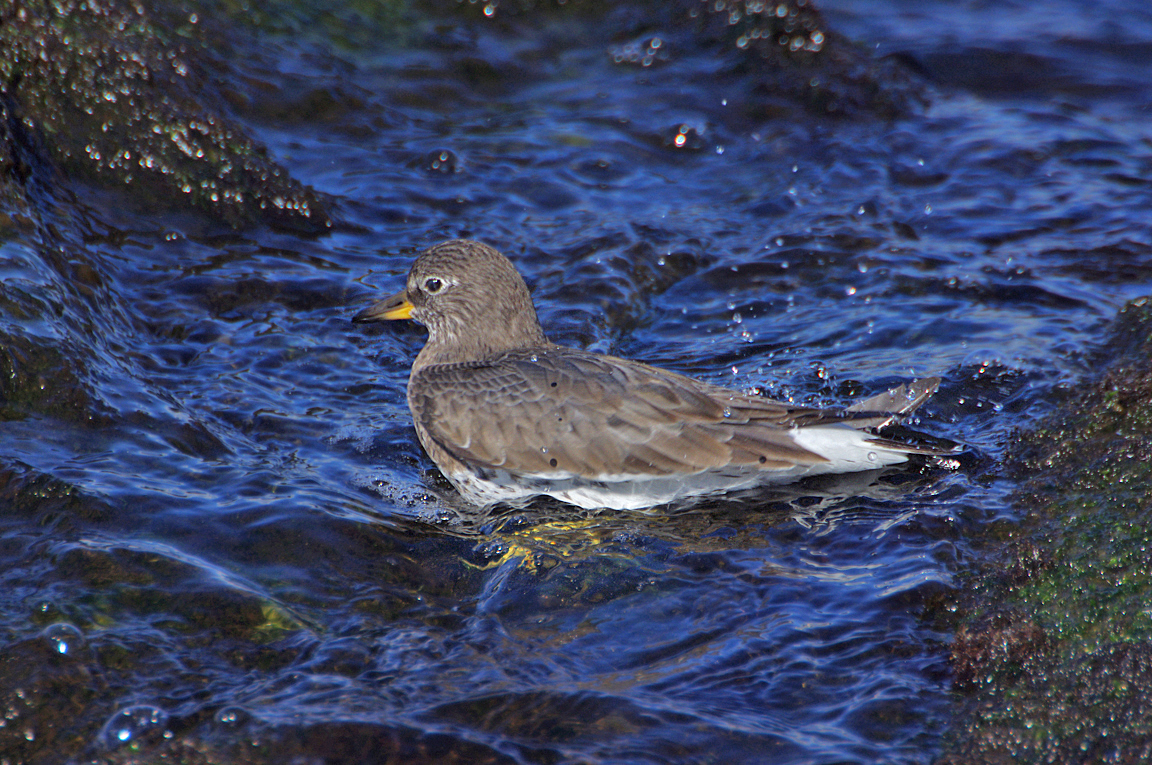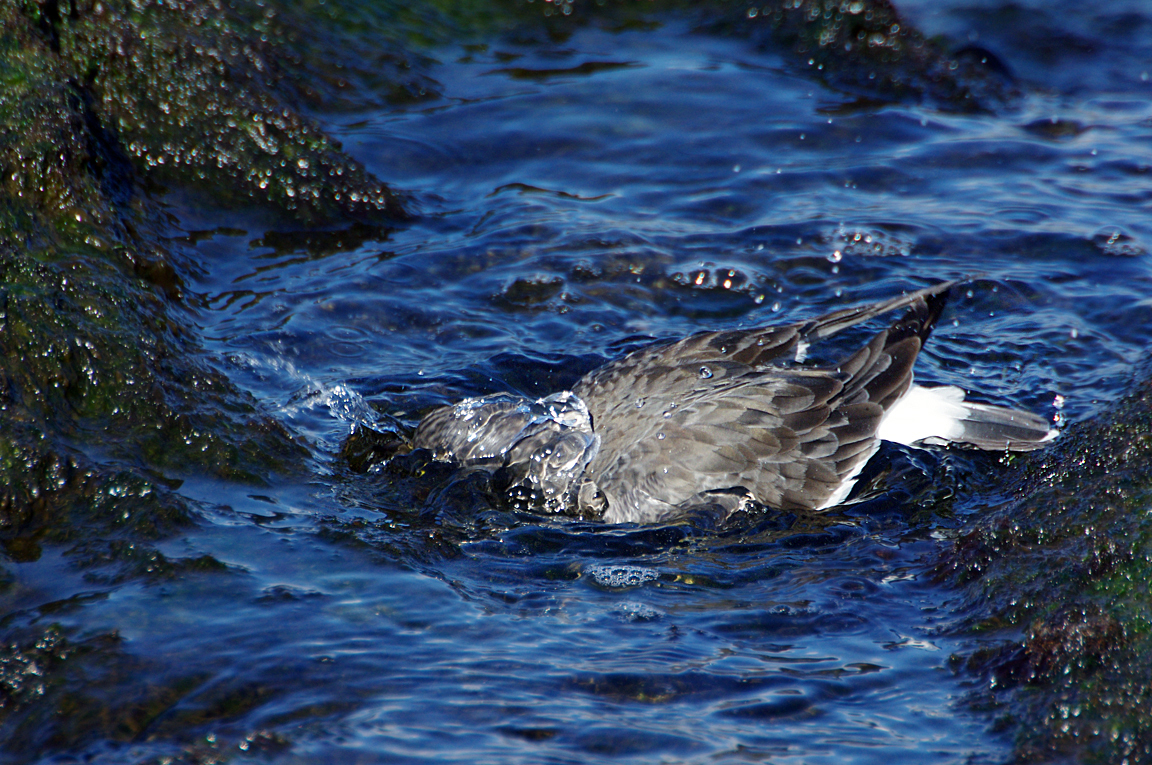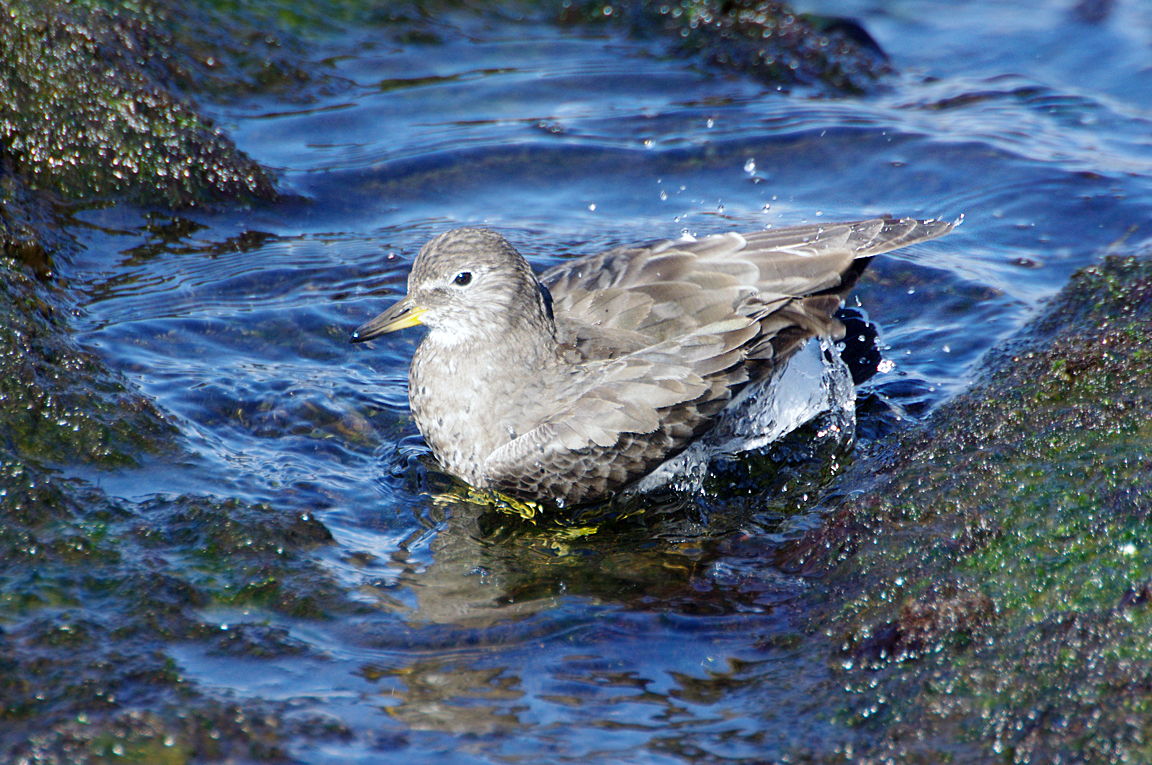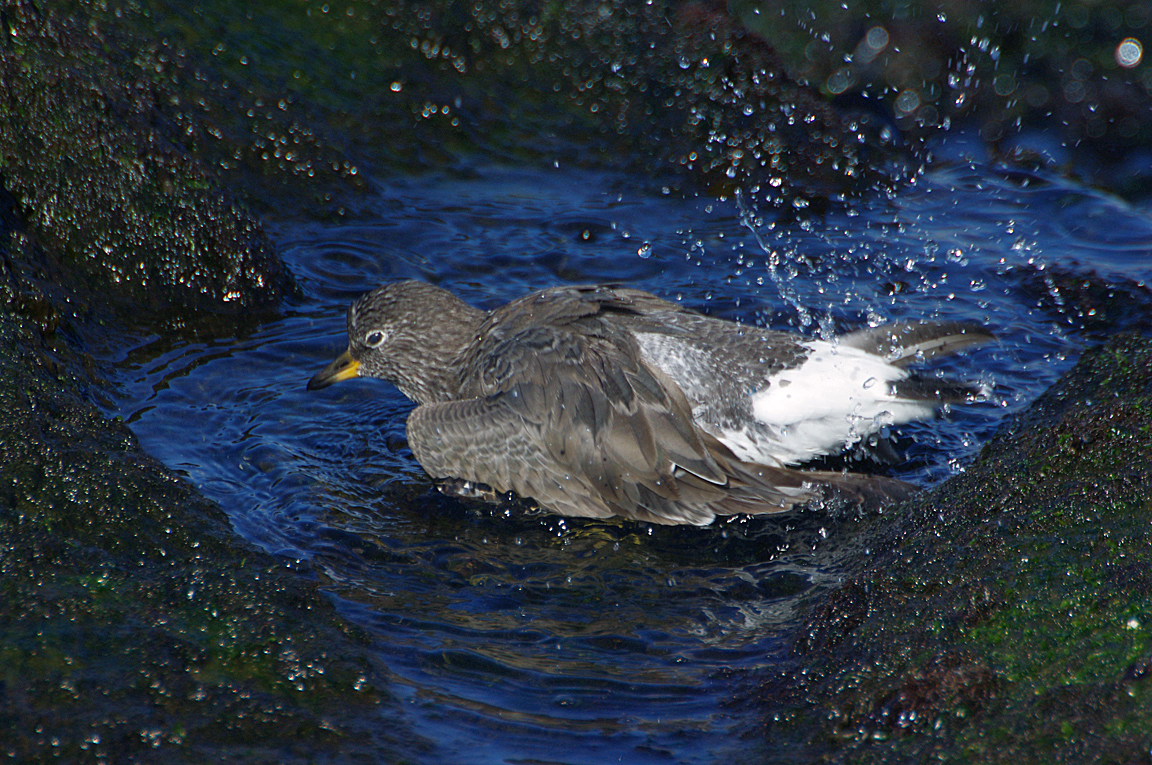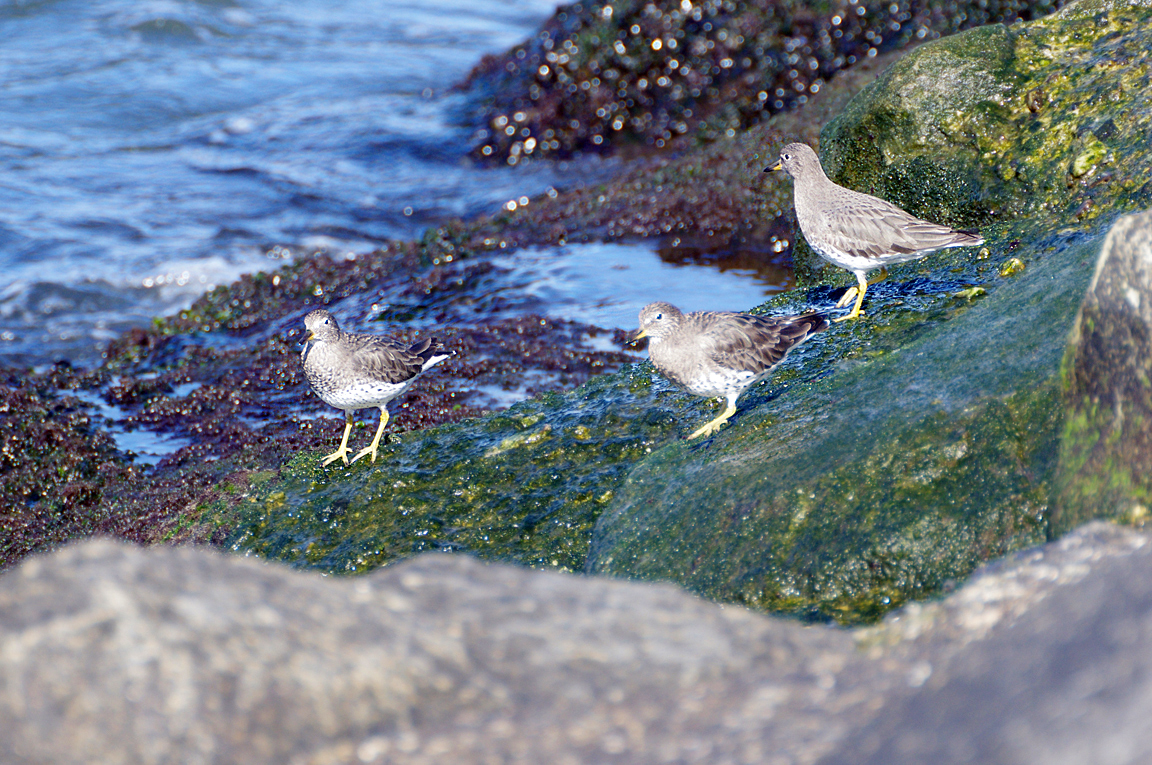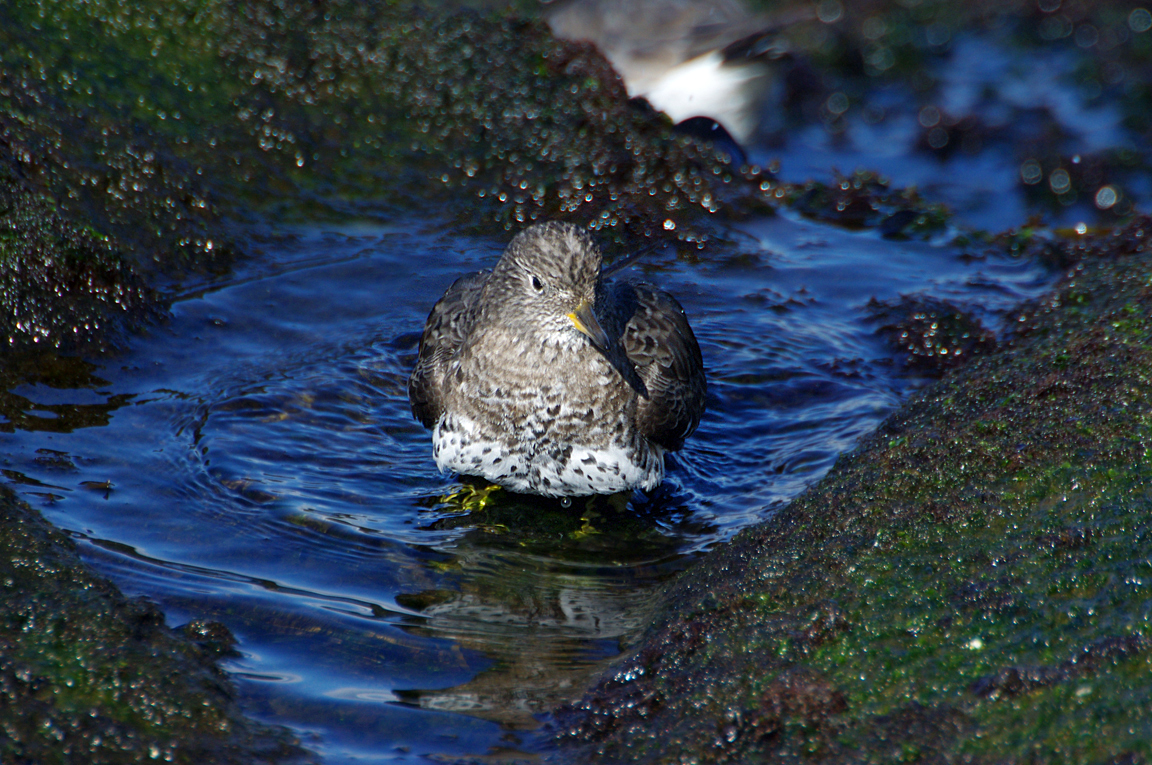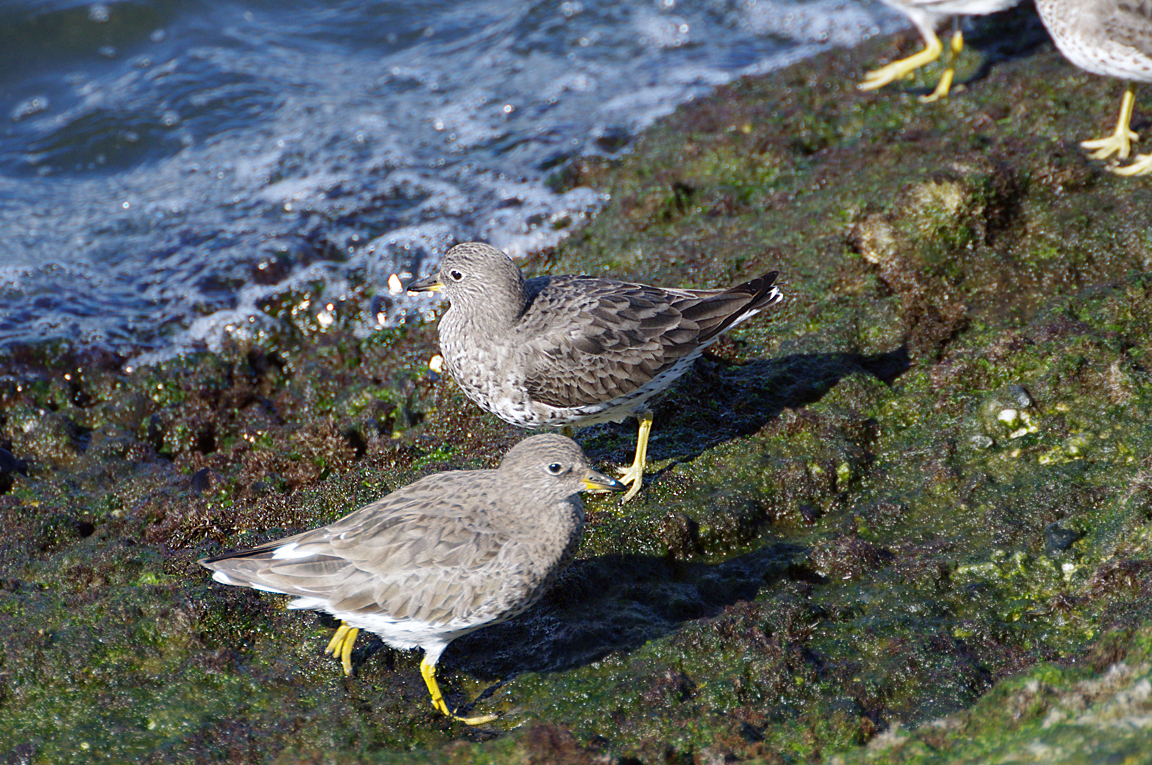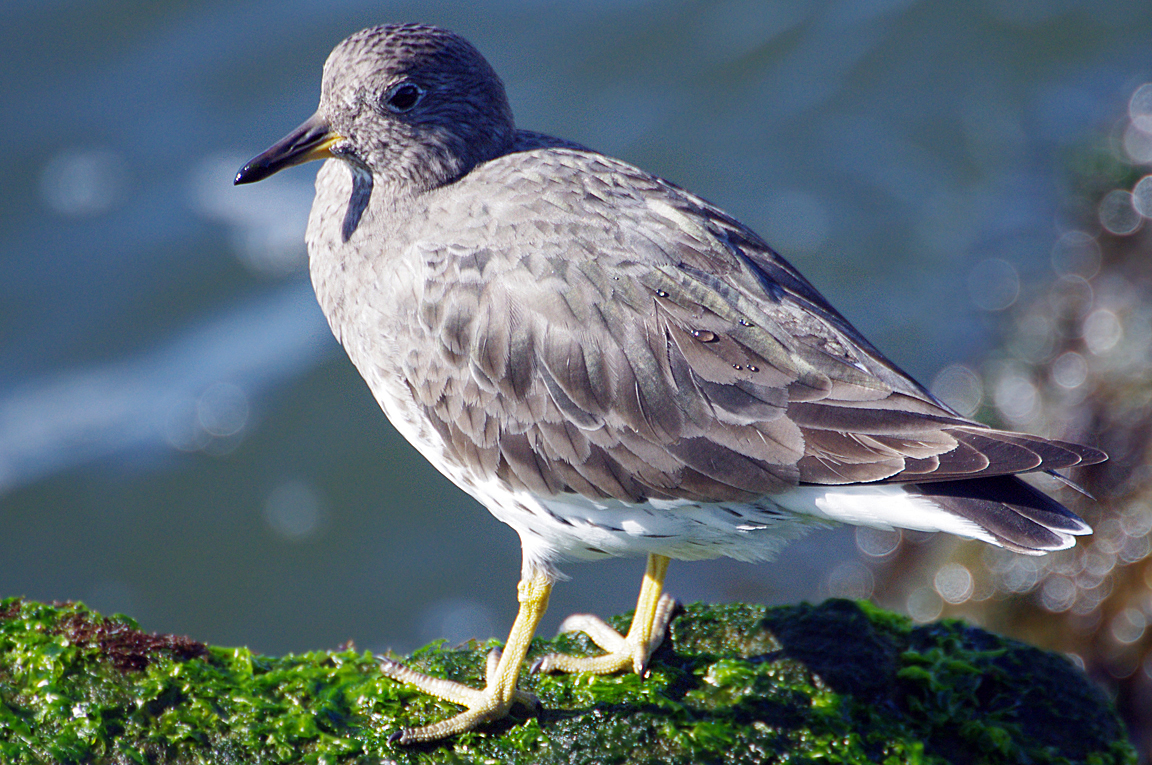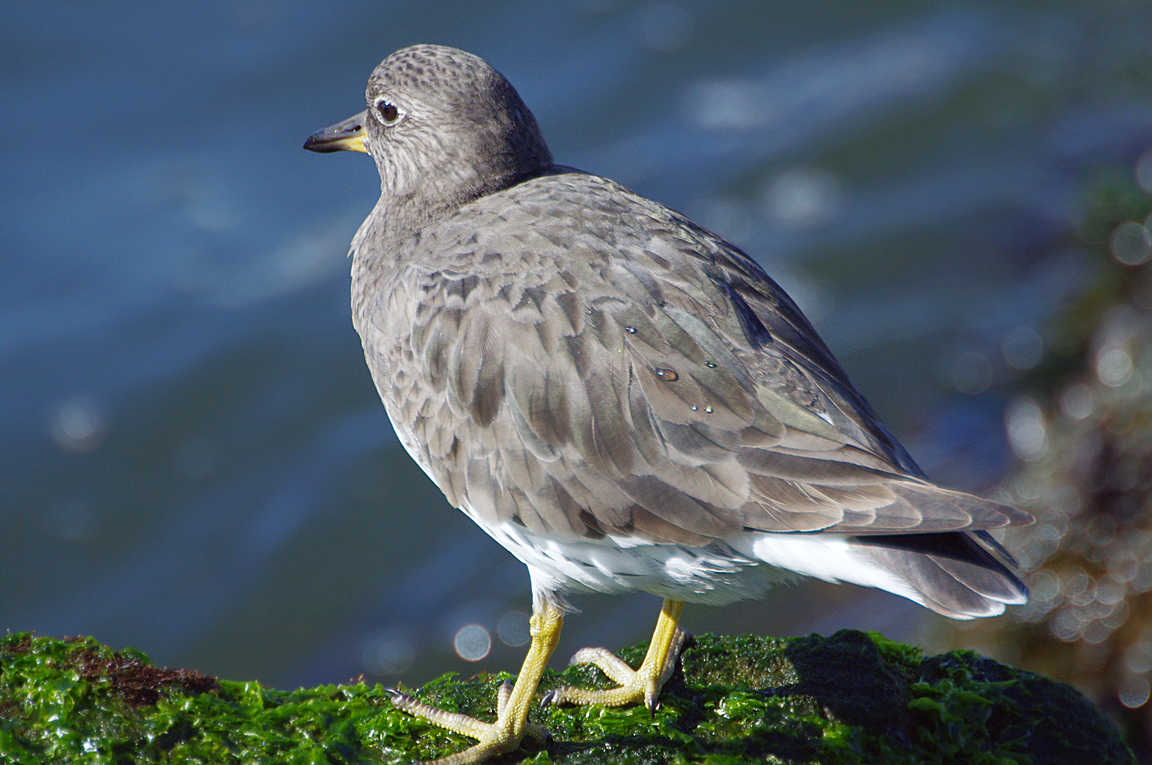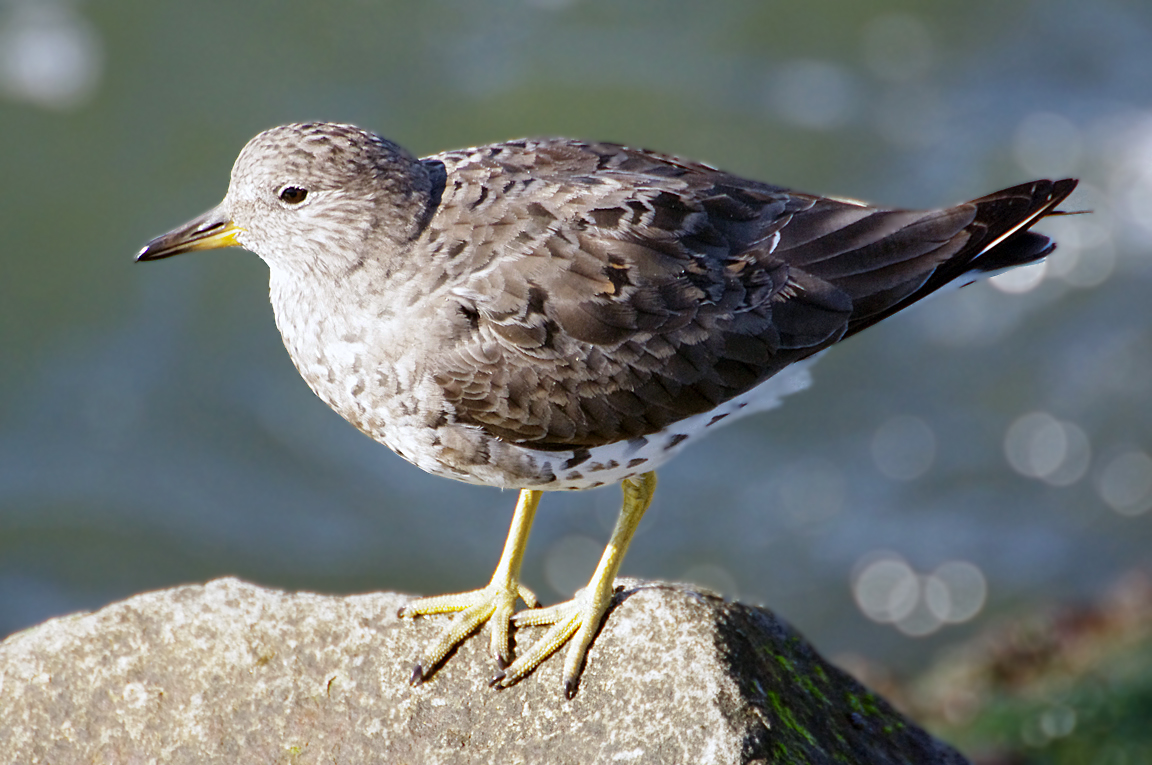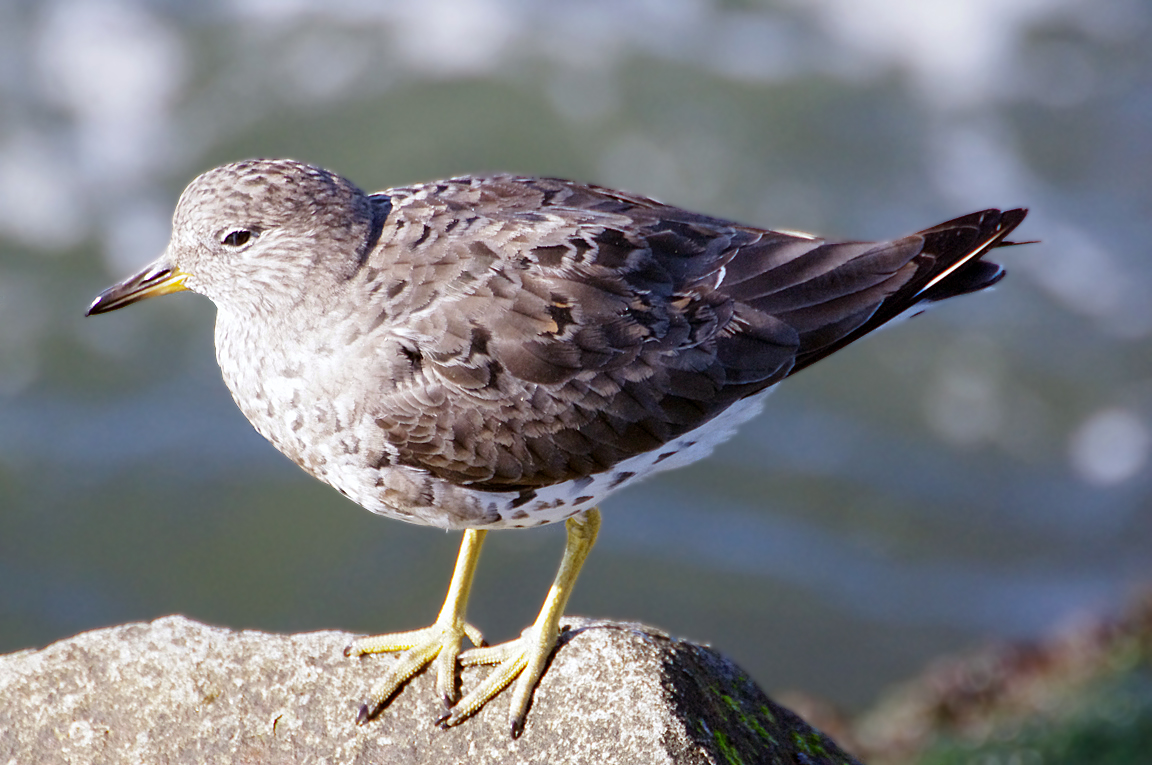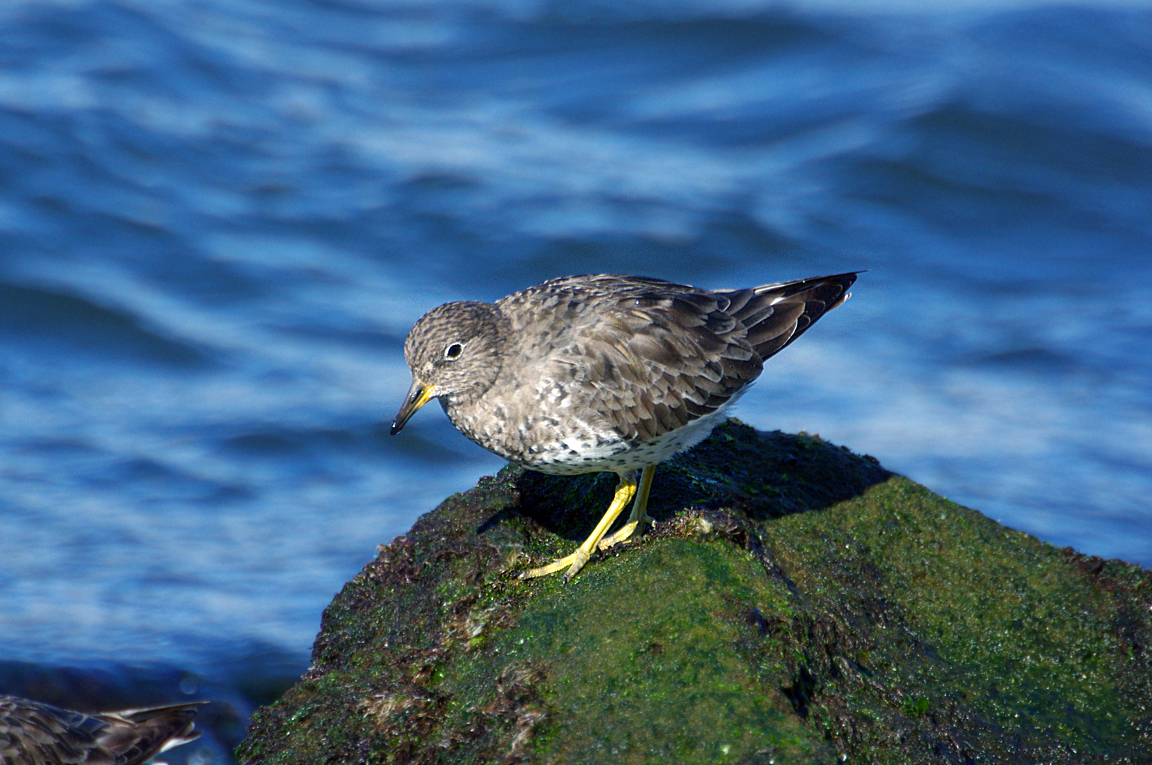|
|
|
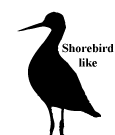 |
Surfbird
|
| Aphriza virgata | |
A stocky shorebird living among the wave-tossed rocks of the Pacific Coast, the Surfbird is rarely found away from the splash and spray of incoming waves. Only to breed does it leave the coast for the rocky mountain ridges of Alaska and the Yukon.
Interesting Information
-
The Surfbird's winter range is among the longest and narrowest of any North American breeding bird. During the winter it can be found from Alaska to the Strait of Magellan, Chile, a distance of more than 17,500 km, and the winter range extends inland only a few meters above the tide line.
-
The Surfbird is usually classified in a genus of its own, as Aphriza virgata, but recent data suggests it is very close genetically to the Red and Great Knots and should be included in Calidris genus. Indeed, the Great Knot looks similar to a larger, longer-billed, somewhat darker surfbird.
-
They remain on the nest until the last moment, and then fly up in the intruding animal's face, a defense mechanism used on humans as well.
-
The USS Surfbird (AM-383) is one of 173 Auk Class minesweepers built during World War II for service in the United States Navy. She was eventually decommissioned and sold. Renamed the Helenka B, she was involved in the March 1989 Exxon Valdez oil spill clean up.
-
A group of surfbirds are collectively known as a "board" and a "kahuna" of surfbirds.
Description
Adult Description
-
Length Range: 25 cm (10 in)
-
Weight: 184 g (6.5 oz)
-
Size: Medium (9 - 16 in)
-
Stocky shorebird.
-
Short, stout bill, pale at base.
-
Legs yellow.
-
White tail tipped with broad black band.
-
White stripe out wing.
-
Rusty on back and breast spotted in breeding plumage.
-
All gray in nonbreeding plumage.
Sex Differences
Sexes Similar
Immature
Resembles nonbreeding adult, but head streaked, breast finely barred, and with pale edges on back feathers.
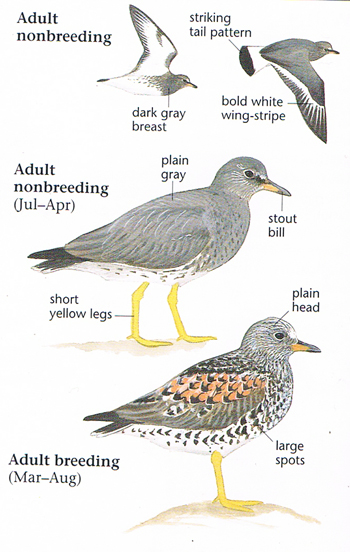
Photo taken from: The Sibley Field Guide by David Allen Sibley
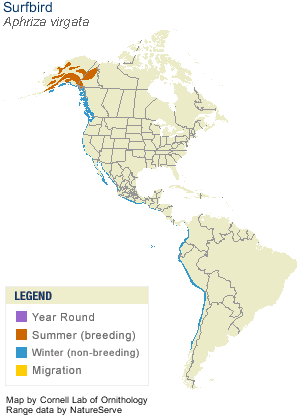
© 2003 Cornell Lab of Ornithology
|
Habitat |
|
Breeds in stony alpine tundra. Winters on wave-beaten rocky shores. |
|
Behavior |
|
Runs over rocks chasing prey, moving continuously. Pulls mussels and barnacles from rocks and swallows them whole. |
|
Food |
|
Aquatic invertebrates and insects. |
Taxonomy
| Kingdom: | Animalia |
| Phylum: | Chordata |
| Subphylum: | Vertebrata |
| Class: | Aves |
| Order: | Charadriiformes |
| Family: | Scolopacidae |
| Genus: | Aphriza |
| Species: | Aphriza virgata |
Similar Species |
|
|
Bird Sound |
|
A sharp "pee-weet." |
|
Eggs look like this |
|
Photo taken from: ARCTOS Collaborative Collection Management Solution |
Videos
Surfbird
Foraging on the rocks #1
Surfbird
Foraging on the rocks #2
Surfbird
Taking a bath
